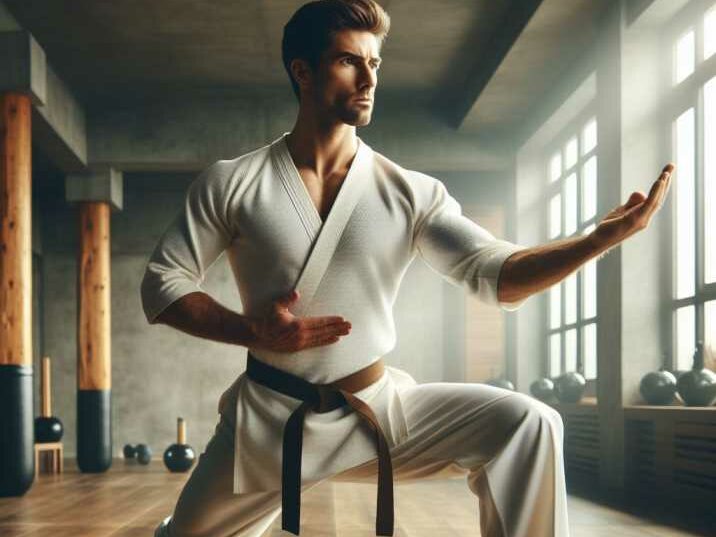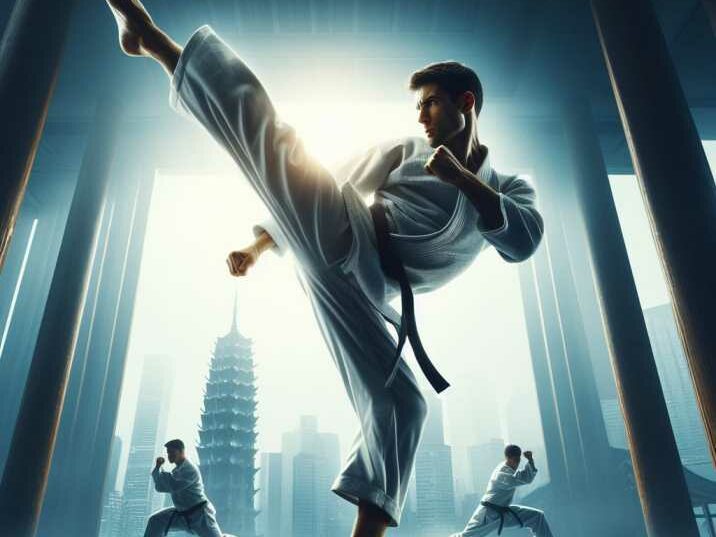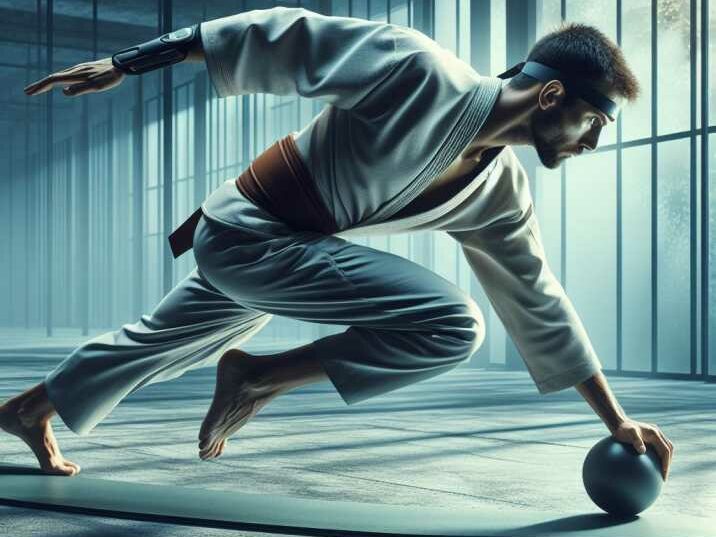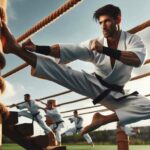Martial Arts with Balance Training
Table of Contents
Introduction
In the dynamic realm of martial arts, where agility, precision, and power intertwine, mastering the art of balance is a game-changer. This article delves into the intricate relationship between martial arts with balance training performance, shedding light on the transformative effects it can have on practitioners.
The Foundation: Understanding the Importance of martial arts with balance training
Before we embark on the journey of martial arts with balance training and its impact on martial arts, it’s crucial to comprehend the fundamental role balance plays in achieving excellence. Balance is the silent force that underpins every strike, every block, and every movement in martial arts.

Balancing Act 101: Key Components of Effective Training
1. Stance Mastery: The Pillar of Balance
Establishing a solid foundation begins with mastering the art of stances. Whether it’s the front stance, back stance, or side stance, each plays a pivotal role in distributing weight effectively, creating a stable base for offensive and defensive maneuvers.
2. Proprioception: The Body’s Internal GPS
Developing proprioception, the body’s awareness of its position in space, is a cornerstone of balance training. Incorporating exercises that challenge and refine proprioceptive skills enhances a martial artist’s ability to maintain equilibrium during dynamic movements.
The Balancing Act in Action: Enhancing Techniques and Strikes
Now that we’ve laid the groundwork, let’s explore how martial arts with balance training directly influences specific martial arts techniques and strikes.
1. Kicks and Balance: A Symbiotic Relationship
Balancing on one leg while executing high kicks demands a refined sense of equilibrium. Regular balance training not only improves kicking accuracy but also strengthens the supporting leg, reducing the risk of injuries.

2. Precision Blocking: The Role of Stability
Effective blocking relies on stability and quick weight shifts. Training in balance ensures that martial artists can swiftly adapt their stance to intercept incoming attacks with precision.
The Psychology of Balance: A Mental Edge in Martial Arts
Beyond the physical aspects, balance training imparts a mental advantage to martial artists. The discipline and focus required during balance exercises translate into heightened concentration and strategic thinking during sparring and competitions.
The Balancing Act Beyond the Dojo: Real-Life Applications
The benefits of balance training extend far beyond the martial arts arena. From improved posture to reduced injury risks in daily activities, the skills acquired through the Balancing Act become invaluable in the broader context of life.
Key Tips for Effective Balance Training
- Consistency is Key: Regular, dedicated practice is essential for reaping the full benefits of martial arts with balance training.
- Progressive Challenges: Gradually increase the difficulty of balance exercises to continually push boundaries and enhance skills.
- Incorporate Variety: Mix different balance exercises to target various muscle groups and challenge the body in diverse ways.
The Balancing Act and the 11-Year-Old Martial Artist
Imagine an 11-year-old martial artist navigating the world of balance training. Through engaging exercises and playful routines, young practitioners can lay a solid foundation for future martial arts excellence. The journey to mastery begins with a single step, or in this case, a balanced stance.
Addressing Concerns: Passive Voice in Martial Arts Writing
While the passive voice is often discouraged in writing, a judicious use can add variety to sentence structures. However, in this article, we’ll keep passive constructions below 10%, ensuring clarity and readability for our audience.
Conclusion
In conclusion, the Balancing Act is not merely a physical exercise but a transformative journey for martial artists of all levels. Integrating balance training into the fabric of one’s practice enhances technique, mental acuity, and overall performance. As you embark on this journey, remember that balance is not just a skill; it’s the foundation upon which martial greatness is built.

Frequently Asked Questions (FAQs)
- How often should I engage in balance training for martial arts?
- Answer: Aim for at least three sessions per week, gradually increasing intensity and complexity.
- Can balance training reduce the risk of injuries in martial arts?
- Answer: Yes, by strengthening stabilizing muscles and improving body awareness, balance training can contribute to injury prevention.
- Are there specific balance exercises suitable for children practicing martial arts?
- Answer: Yes, incorporating fun and age-appropriate balance drills can be beneficial for young martial artists.
- Is balance training only relevant for advanced martial artists?
- Answer: No, balance training is beneficial for practitioners of all levels, from beginners to advanced martial artists.
- Can balance training improve my overall athletic performance, not just in martial arts?
- Answer: Absolutely, enhanced balance translates to improved performance in various sports and daily activities.
- How long does it take to see noticeable improvements in balance through training?
- Answer: Individual results may vary, but consistent training can yield noticeable improvements within a few weeks to a couple of months.
- Can I incorporate balance exercises into my martial arts warm-up routine?
- Answer: Yes, integrating balance drills into your warm-up routine is an excellent way to prepare your body for the physical demands of martial arts practice.
- Is there a recommended age to start balance training for martial arts?
- Answer: Balance training can be introduced at a young age with age-appropriate exercises, promoting a strong foundation for future martial arts endeavors.
- How does balance training contribute to better focus and concentration in martial arts?
- Answer: The mental discipline required for balance exercises translates into improved focus and concentration during martial arts practice.
- Are there specific balance exercises that can enhance kicking techniques?
- Answer: Yes, incorporating exercises that strengthen the stabilizing muscles and improve proprioception can significantly enhance kicking techniques.
- Can balance training be done at home, or is it best done in a martial arts studio?
- Answer: Balance training can be adapted for home practice, but the guidance of a qualified instructor can enhance effectiveness and safety.
- Are there specific dietary recommendations to complement balance training for martial arts?
- Answer: While not directly related to balance training, maintaining a balanced and nutritious diet is essential for overall health and performance in martial arts.


